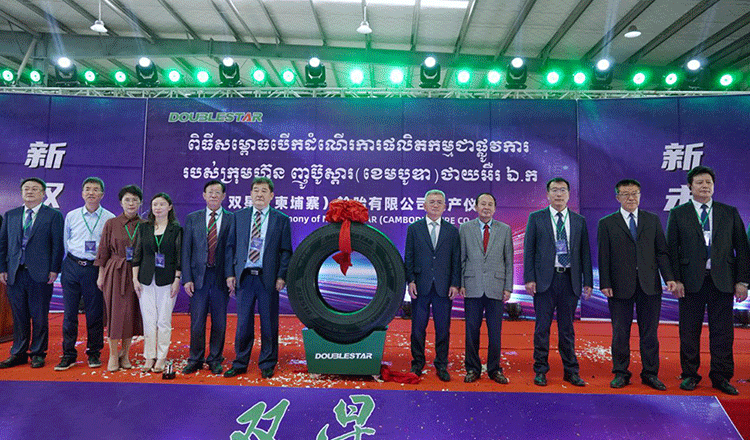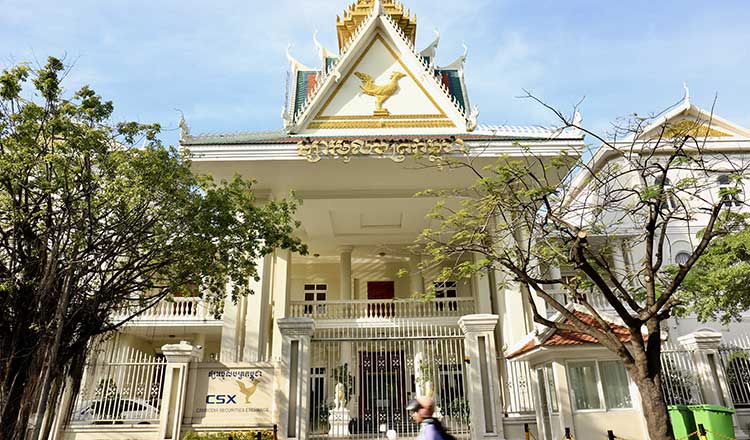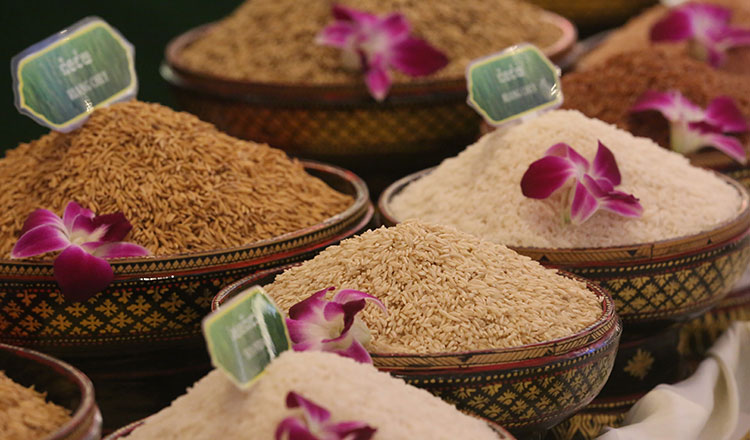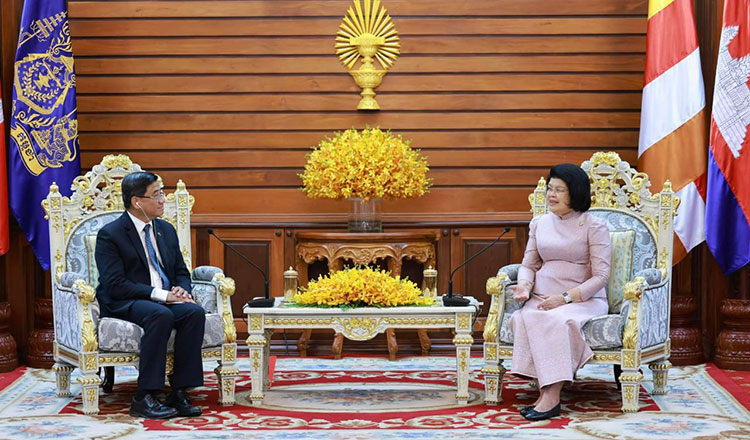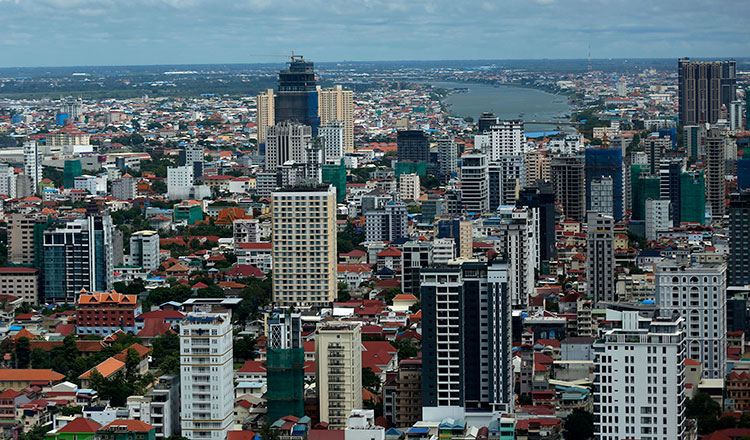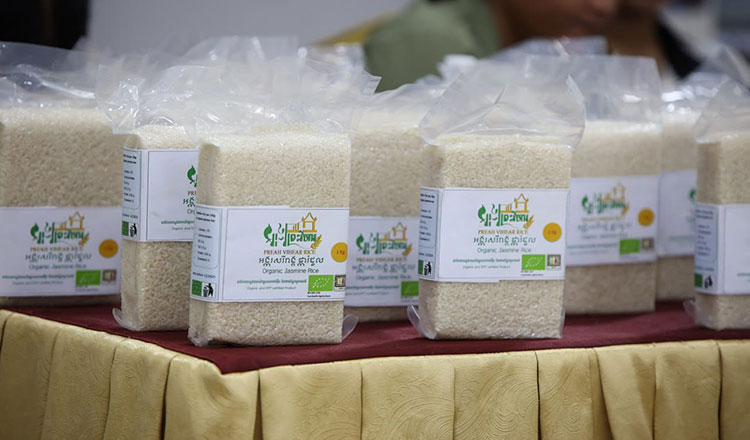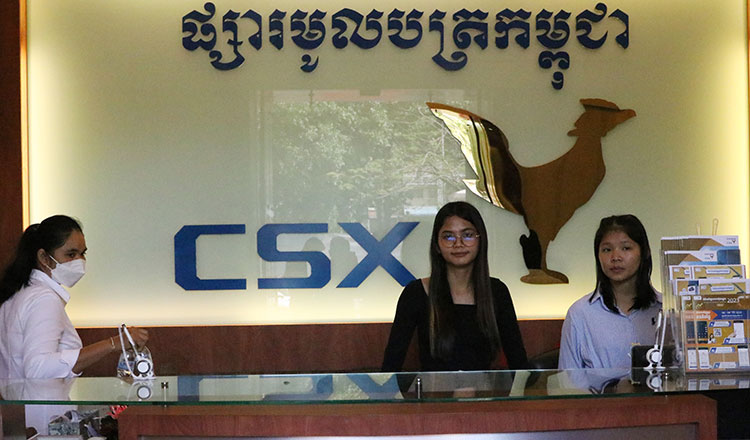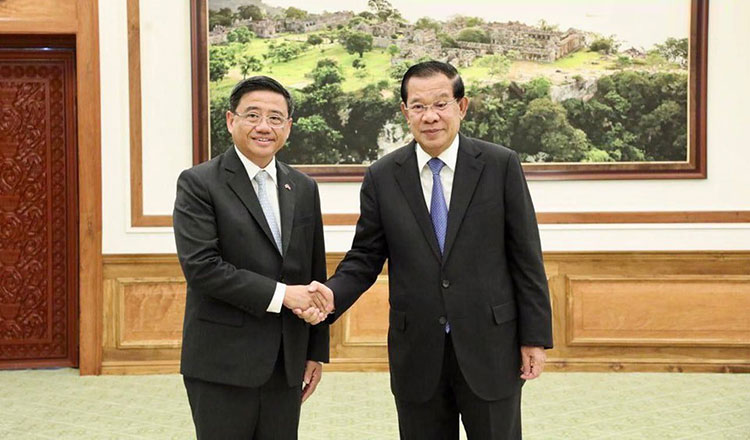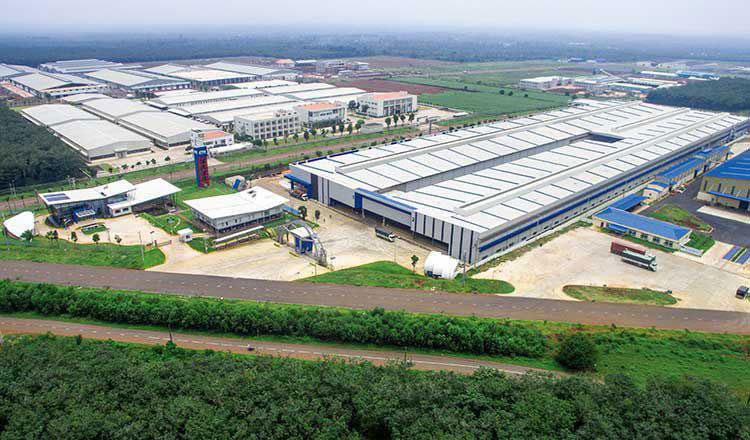Will the BRICS bloc influence Cambodian trade and investment?
Will the BRICS bloc influence Cambodian trade and investment?
The overwhelming hold on the global economy by the West, especially by the United States Dollar since World War II is slowly but steadily loosening its grip. While this could be one of the reasons for the offshoot of BRICS, this trade bloc is constantly expanding both in length and breadth of its sheer desire to have a shared currency exchange platform for servicing global trade between its members. Khmer Times looks at how the shift in global trading alliances influences the Cambodian economy in the short-, medium- and longer-term
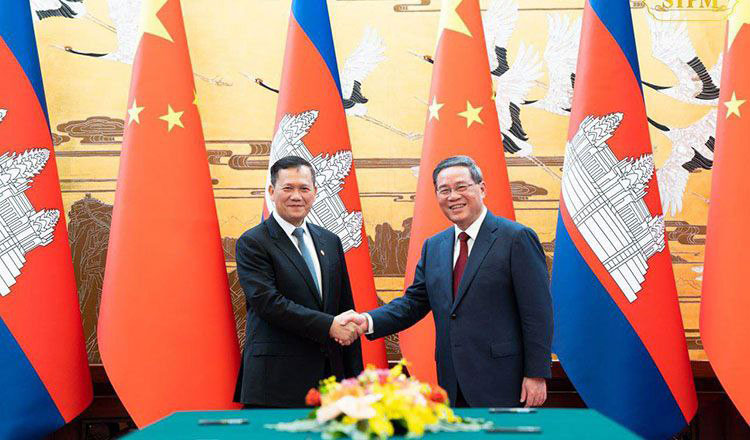
In a global economy traditionally dominated by Western powers, the fast growth of the BRICS trade bloc appears to represent a chance for emerging economies worldwide, especially in the global South, to develop their economies outside of Western markets, institutions and currencies, for the betterment of partner state sovereignty and socioeconomic development.
While Cambodia has not yet expressed any official interest in joining the BRICS alliance as a member or observer, the movement is likely to have a substantial influence on the Cambodian economy in both the short and long term, suggest several commentators.
What is BRICS?
First launched in 2001 under the acronym ‘BRIC’, the founding members were Brazil, Russia, India and China.
In 2010, South Africa was admitted as the fifth member, and the alliance was renamed ‘BRICS’.
As of January 1 2024, the group has become a 10-nation body; now including new Middle Eastern members namely Egypt, Ethiopia, Iran, Saudi Arabia and the United Arab Emirates (UAE).
The bloc also has a long list of countries seeking membership this year, including Malaysia and Venezuela, among many other potential international entrants.
The five primary BRICS countries collectively represent almost 3.3 billion people, making it the largest trading bloc in the world in terms of population potential.
The cumulative gross domestic product (GDP) of BRICS nations represents around 27 percent of the gross world product, and taking into account the bloc’s purchasing power parity, the alliance reflects over 33 percent of the world’s total production.
With new members coming on board, the network will continue to snowball in terms of potential for trade, investment and development between its members.
Since its launch, the BRICS bloc has actively implemented initiatives related to the economic, social, and security of its members.
Most notably the bloc appears to desire a shared currency exchange platform for servicing global trade between its members, outside of western controlled mechanisms or currencies.
The members of BRICS seek to trade outside of the USD due to fluctuations of the US federal reserve interest rates, the dollar has been the dominant trade currency around the globe since the close of the Second World War.
BRICS & Cambodia
Kin Phea, Director General of the International Relations Institute of the Royal Academy of Cambodia, in a recent interview with the Russian International Affairs Council (RIAC), said that he believes BRICS is a very important alternative for Cambodia to consider alongside the nation’s pre-established economic relationships.
“I believe BRICS is the backbone of the global economy, especially for the Global South. So, in my perspective, I think Cambodia should consider becoming a member, if it is possible, or at least be an observer to the organization,” he said.
Kin said he believes that BRICS can be an alternative to the G7 in the future.
“BRICS is broader, more inclusive [and] BRICS does not intend to block any country or any group of countries. It’s different from the G7, who often mobilize only to block a country, or do something to harm or punish other countries,” he explained.
He also said that BRICS can provide an alternative for Cambodia during the process of de-dollarization.
“This is very important because the world currently seems to be overly dependent on dollars. So, if BRICS can create a type of BRICS currency in the future, I think the world would be more balanced. After all, balance is very important right now,” Kin concluded.
Sisavuthara Sim, Founder and CEO of Nexus Capital & Investment Advisory, speaking with the Khmer Times this week, said it may be more difficult for Cambodia to align with BRICS in the short term, for a number of reasons.
In general, most regular people in Cambodia are not even familiar with BRICS, he said, although politicians and business owners such as himself are most likely aware of the initiative in some capacity, given they keep an eye on geopolitical economic shifts as a means to prepare and direct their own organizations.
“As I understand, the BRICS initiative is driven by countries like China and Russia due to political pressure on their institutions from other world powers, leveraging the coalition as a means to overcome economic and political obstacles,” he said.
The BRICS bloc poses several possible negative and positive outcomes for the Cambodian economic outlook, said Sisavuthara, whether or not the nation becomes directly involved with the initiative or not.
From Sisavuthara’s outlook, it appears unlikely that Cambodia would apply for BRICS membership in the short or medium term.
Firstly, compared to other BRICS member states, Cambodia is a small player in terms of population size and current economic capacity.
BRICS member states include 45 percent of the global population, and 28 percent of the global economy, explained Sisavuthara.
Hence Cambodia’s involvement with the coalition in terms of trade and investment would have only a small impact on the collective.
It’s important to remember, said Sisavuthara, that Cambodia still has considerable progress and development necessary to take advantage of its pre-existing trade coalitions and free trade agreements (FTA) with other global partners.
For instance, Cambodia is already a member of ASEAN, and it represents its most logistically proximate FTA alliance.
However, as of now Cambodian owned businesses have few investments in other ASEAN member states, he said.
Acleda Bank is invested in the Laos market, for instance, and there are other examples of outward expansion into ASEAN partner states by Cambodian-headquartered firms. Still, for the most part, Cambodia is yet to leverage potential opportunities within the ASEAN member states, he said.
Cambodia is however benefiting from trade with ASEAN along with increasing foreign direct investment (FDI) from ASEAN member states, especially as Chinese investment has lessened in recent periods, noted Sisavuthara.
For instance, Cambodia trades a lot with neighbouring Vietnam and Thailand, yet this relationship results in a trade deficit for the country.
“Cambodia has a lot of potential expansion in terms of trade and investment within the ASEAN region already, without adding more potential partners from further reaches of the world such as BRICS,” he suggested.
Another example relates to Cambodia’s strong relationship with China, a leader of the BRICS bloc, continued Sisavuthara.
Cambodia already has an FTA with China, however, this relationship is still developing similarly to ASEAN FTA initiatives, and Cambodia has significant room to grow before the economy can take full advantage of this Cambodia-China FTA.
While China is open to expansive trade with Cambodia, especially in terms of imports from Cambodia into China, Cambodia is still developing its production capacity and logistics networks to fully leverage the trade ties with China, said Sisavuthara.
“We have a lot of room for growth before we can truly take full advantage of these opportunities with China,” he said.
“As of yet, we cannot reach Chinese demand and competitiveness, meanwhile our logistics infrastructure for export is still lacking,” he explained.
These improvements reflect the current short and medium-term goals for the economy, however, Cambodia still has considerable growth necessary before the country needs to hunt for more trade opportunities globally, for instance, BRICS, he said.
Funan Techno Canal & FTAs
The recent launch of the Funan Techno Canal (FTC) represents a significant step in terms of developing logistics efficiency for greater global trade and investment, and a move towards greater independence for the economy through bypassing Vietnamese ports, for instance, but it will be several years before the benefits of this will be felt in the economy, noted Sisavuthara.
Similarly, Cambodia has various other FTAs already in place, such as with the EU, Japan and Korea, which Cambodia is still largely under-leveraging, Sisavuthara said.
As a current signatory to the Regional Comprehensive Economic Partnership (RCEP), for instance, Cambodia plays a role in connecting around 30 percent of the world’s population and global output.
To truly leverage these pre-existing trade relationships, Cambodia must increase production capacity along with product diversification, enhance transport and logistics infrastructure and improve public service governance, while the new investment law provides the conducive and attractive conditions to attract inbound investments and capital, he explained.
Taking on trade partners such as India, Brazil and South Africa for instance, other emerging economies within BRICS might be overwhelming given Cambodia is an export-driven market currently.
Hence, from a trade and investment perspective, Cambodia is not yet ready to join BRICS, he confirmed.
“Without proper preparation of the economy, entering another trade bloc would have few benefits,” said Sisavuthara.
However, in terms of global diplomacy, BRICS may influence the Cambodian economy considerably, Sisavuthara contended.
BRICS was created to balance the power of emerging economies worldwide, and support their trade and investment growth alongside pre-established economic alliances, he explained.
Ultimately, BRICS has a vision of creating a new currency exchange, in order for its members to remove their dependence on the USD and the influence of the US Federal Reserve during trade exchanges.
Fluctuations in the US Federal Reserve interest rates damage the trade power of countries reliant on the currency for trade, he said.
India and China are actively reverting to gold reserves to escape fluctuations in the USD in recent periods, for instance, and this has caused a surge in global gold prices, he said.
China is also increasingly trading in RMB with nations such as Russia, in business previously conducted in USD.
While a shared currency is the ultimate goal of the BRICS alliance, it will likely not be achieved in the short term, but instead maybe in the longer term of a few decades, said Sisavuthara.
Therefore Cambodia should remain cautious, he said, due to a need to balance power dynamics between BRICS nations and Western trade partners.
Cambodia, with a dollarized economy, currently conducts about 90 percent of its trade in USD, said Sisavuthara.
Furthermore, Cambodia exports a lot of its production to Western markets, and these industries provide large employment inside the country.
If Cambodia were to enter BRICS in the short term it would likely damage trade with the West, which would quickly reduce the benefits of current relationships, he explained.
“While Cambodia distancing itself from the USD may represent a long-term goal, for the short term we need Western markets for a healthy trade balance,” he said.
Already Cambodia’s growing relationship with China has caused pressure on the relationship between Cambodia and the West, said Sisavuthara, and the nation continues to try to find a balance between the two economies’ competition.
This geopolitical tension between the two powers has prompted growth in Chinese investment in Cambodia in recent periods, especially in terms of manufacturing, due to rising tariffs imposed on China by traditional Western importers.
For this reason, the ongoing geopolitical turmoil poses some benefits to Cambodia currently, and other ASEAN members such as Vietnam and Thailand, noted Sisavuthara.
But it remains a balancing act for Cambodia, given the economy’s reliance on Western export markets.
“In the future, when the Cambodian economy and trade are more diversified, and we have gained independence in terms of trade, joining an alliance like BRICS may be a worthwhile option,” he said.
“But for the time being, given the strong economic ties with the West, Cambodia must remain somewhat independent, and balance power between superpowers like the US, EU and China, concurrently.”
Jumping on the BRICS bandwagon now would likely damage this balance of power, with immediate consequences for the economy, stressed Sisavuthara.
Furthermore, he explained that Western institutions such as the International Monetary Fund (IMF) and World Bank (WB) have invested a lot in Cambodia’s economy since 1993, not only in terms of financing but also in technical support for the benefit of the economy’s potential.
Only in the last ten years or so has China risen to become Cambodia’s largest donor, he said, prior to this, Western institutions have been Cambodia’s primary development partners, and they remain a key player still in the market’s growth and development.
There is no doubt that BRICS will create geopolitical benefits for its members, however, Cambodia must be fully ready to leverage such benefits outside the sphere of Western influence, he said.
“Only when the economy is more diversified in terms of trade and investment will Cambodia be able to reduce its reliance on some markets. Until then, it would be regrettable to lose Western markets in exchange for an uncertain new alliance,” he confirmed.
Cambodia has to remain balanced, he said, and over-alignment with BRICS now would likely unbalance the economy given its current makeup.




